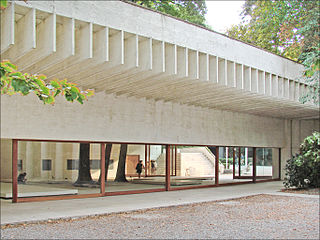Related Research Articles

Hans Ulrich Obrist is a Swiss art curator, critic, and art historian. He is artistic director at the Serpentine Galleries, London. Obrist is the author of The Interview Project, an extensive ongoing project of interviews. He is also co-editor of the Cahiers d'Art review. He lives and works in London.
Claudio Silvestrin is an Italian architect and designer, and a British citizen.

Carolyn Christov-Bakargiev is an Italian-American writer, art historian and exhibition maker who served as the Director of Castello di Rivoli Museo d'Arte Contemporanea in Turin in 2009 and from 2016 to 2023. She was also the founding Director of Fondazione Francesco Federico Cerruti from 2017 to 2023. She was Edith Kreeger Wolf Distinguished Visiting Professor in Art Theory and Practice at Northwestern University (2013–2019). She is the recipient of the 2019 Audrey Irmas Award for Curatorial Excellence. She is currently Honorary Guest Professor at FHNW University of Applied Sciences and Arts Northwestern, Switzerland. She has lectured widely at art and educational institutions and Universities for the Arts, including the Goethe University, Frankfurt; Harvard University, Cambridge; MIT, Boston; Jawaharlal Nehru University, New Dehli; Cooper Union, New York; The Courtauld Institute of Art, London; Monash University, Melbourne; Di Tella University, Buenos Aires; Northwestern University, Chicago, and UNITO, Università di Torino, Turin.

Francesco Bonami is an Italian art curator and writer who is currently Honorary Director of Fondazione Sandretto Re Rebaudengo in Turin. He lives in Milan and Manhattan, New York.
Luisa Lambri is an Italian artist working with photography and film, based in Milan. Her photographs are often based on architecture and abstraction.
Adrián Villar Rojas is an Argentinian sculptor known for his elaborate fantastical works which explore notions of the Anthropocene and the end of the world. In his dream like installations he uses aspects of drawing, sculpture, video and music to create immersive situations in which the spectator is confronted with ideas and images of their imminent extinction.

The French pavilion houses France's national representation during the Venice Biennale arts festivals.

The Australian pavilion is a structure that houses Australia's national representation during the Venice Biennale arts and architecture festivals. Although Australia has been represented at the arts festival since 1954, the first pavilion was only built in 1987, and replaced by a permanent structure in 2015.

The Czech and Slovak pavilion houses the national representation of the Czech Republic and Slovakia during the Venice Biennale arts festivals.

The Belgian pavilion houses Belgium's national representation during the Venice Biennale arts festivals.

The Brazilian pavilion houses Brazil's national representation during the Venice Biennale arts festivals.

The Korean pavilion houses South Korea's national representation during the Venice Biennale arts festivals.

The Serbian pavilion is a national pavilion of the Venice Biennale arts festivals. It houses Serbia's national representation.

The Polish pavilion houses Poland's national representation during the Venice Biennale arts festivals.

The Israeli pavilion houses Israel's national representation during the Venice Biennale arts festivals. Jewish Israeli artists first participated in the 24th Venice Biennale in the Erez Israel, Artisti Palestinesi pavilion. Israel first participated in the 25th Venice Biennale in 1950.

The Finnish pavilion houses Finland's national representation during the Venice Biennale arts festivals.

The Nordic Pavilion houses the national representation of the Nordic countries Sweden, Norway, and Finland during the Venice Biennale arts festivals.
The Danish pavilion houses Denmark's national representation during the Venice Biennale arts festivals. The building was designed by Carl Brummer and constructed between 1930 and 1932, and restored and expanded by Peter Koch in the 1950s.
Andra Ursuța is a Romanian-American sculptor who has lived and worked in New York since 2000. Ursuța is known for her nihilistic portrayal of the human condition, confronting issues such as patriotism, violence against women, and the “expulsion of ethnic groups”. Ursuța's work is held in public collections worldwide.

Patrizia Sandretto Re Rebaudengo is an Italian contemporary art collector, patron and private museum owner, known for her extensive collection, support of young artists, and her role in transforming cultural spaces. She is the president of the Fondazione Sandretto Re Rebaudengo.
References
- ↑ "Patrizia Sandretto Re Rebaudengo". artreview.com. Retrieved 2020-08-31.
- ↑ Georgina Adam (November 10, 2021), Patrizia Sandretto Re Rebaudengo: ‘When I started collecting it was much less about social climbing’ Financial Times .
- ↑ "Torino. L'arte contemporanea invade l'ex fabbrica". La Repubblica. 2014-05-19. Retrieved 2020-08-31.
- ↑ "Claudio Silvestrin, tommaso buzzi · Fondazione Sandretto Re Rebaudengo. Torino, Italy". Divisare. Retrieved 2020-08-31.
- ↑ Farah Nayeri (20 November 2018), A Prominent Art Patron Sets Her Sights on Madrid New York Times .
- ↑ Alex Greenberger (25 September 2017), Patrizia Sandretto Re Rebaudengo to Open Foundation in Madrid ARTnews .
- ↑ Alex Greenberger (25 April 2022), Collector Patrizia Sandretto Re Rebaudengo to Turn Venetian Island into Arts Space ARTnews .
- ↑ Georgina Adam (November 10, 2021), Patrizia Sandretto Re Rebaudengo: ‘When I started collecting it was much less about social climbing’ Financial Times .
- ↑ Alex Greenberger (25 April 2022), Collector Patrizia Sandretto Re Rebaudengo to Turn Venetian Island into Arts Space ARTnews .
- ↑ Georgina Adam (November 10, 2021), Patrizia Sandretto Re Rebaudengo: ‘When I started collecting it was much less about social climbing’ Financial Times .
- ↑ Farah Nayeri (20 November 2018), A Prominent Art Patron Sets Her Sights on Madrid New York Times .
- ↑ Collaboration with Fondazione Sandretto Re Rebaudengo Philadelphia Museum of Art, press release of May 18, 2017.
- ↑ "Fondazione Sandretto Re Rebaudengo". World Art Foundations. Retrieved 2020-08-31.